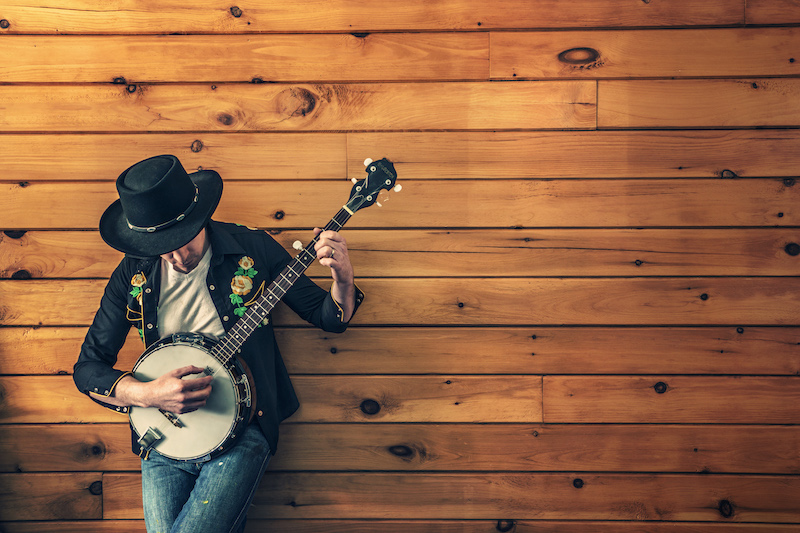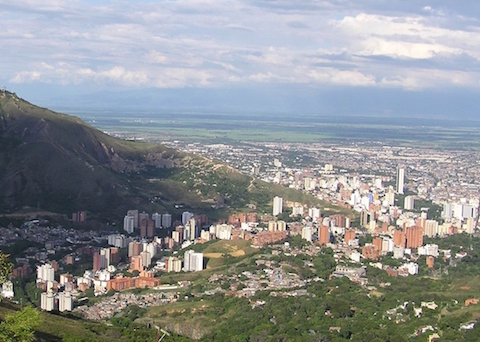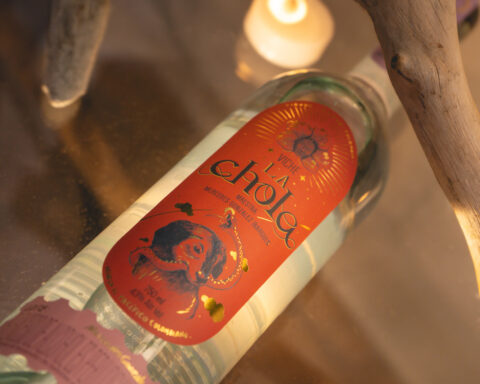Have you ever been to a club in Colombia after taking a few salsa classes? You feel confident and excited, ready to demonstrate your newly-acquired skills. You ask a local if he or she cares to dance. A few minutes later the DJ puts on a new song. To your un-trained gringo ears, it sounds exactly like salsa… only it is not. It’s merengue and all of your salsa-moves are making you look like a fool on la pista – the dance floor. You begin bumping into the other dancers. They start sending you those “get-outta-here gringo”-looks. You date gets bored with you stepping on his or her toes with every second move and within minutes, maybe seconds, you’re back at your table, alone, semi-depressed and drowning your sorrows in aguardiente.
I’m sure a variety of the above scenario has happened to several foreigners in Colombia, and many other places in Latin America for that sake.
Dancing is a very big part of Latin culture. If you refuse to dance, you’ll be left out of many social gatherings or left alone at the table when everybody else goes to dance.
While a blog post will never teach you how to dance, I’ll make an attempt to teach you how to distinguish the different types of latin music so, if nothing else, at least you’ll know when to venture to the dance floor and when to stay put.
The list below is my guide to latin music and contains the most common genres that you’ll encounter in Colombia and probably most of Latin America in general. I’ll name some of the big well-known artists in each category and link to a few YouTube videos so you’ll get a feel for it.
Some of the genres are both a style of music as well as a way of dancing. This is where you’ll need to hone your skills and ears if you wanna play with the Latinos on the dance floor. In the mind of a Latino, few things are as sexy as a person who can dance well. I have to agree. Spend a little time learning a few moves. I guarantee you that it will be a good investment.
Many of the top Latin groups never make it big in Europe or North America. That doesn’t mean that they aren’t any good though. Far from it. It’s kind of like Bollywood in India, whose movie industry you never hear about, even though they have a bigger audience for their productions than most Hollywood productions.
The list below is far from extensive, but hopefully it will open your eyes to an artist or two that you’ve never heard of before. Step out of your comfort zone, leave your bubble, and enjoy!
Salsa
In Cali where I live, salsa is king, and dominates the most of the nightclubs. Never in my life had I tried going out for an entire night without being able to recognize a single song. Two years later, my knowledge of salsa is still in its infancy, but none the less, I’ve gotten sort of a feel for it.
Salsa originated in the Latino communities of New York and has strong influences from Cuba, Puerto Rico and Colombia. I have a joke around my house that the only thing a Latino does fast is talk and dance salsa.
The list of good salsa songs are endless, but I’ll try to give you a few to begin your journey.
Marc Anthony with “Valio La Pena” and “Vivir Mi Vida”, plus Gilberto Santa Rosa who sings “Conteo Regresivo” are easy entry points. Both are newer songs in a genre that is dominated by old classics. El Gran Combo from Puerto Rico bring their stable performance to the Cali Feria every year. “Me Libere” is one of their many big hits. Richie Ray’s “Sonido Bestial” is a classic and long enough to leave you with a sweaty armpit. Joe Arroyo is my opinion the best Colombian artist in the salsa genre. I’m sure there are many more, but his song about the Spanish occupation and the violence against the African slaves called “No Le Pegue A La Negra” is my absolute favorite.
Salsa Choke
Is a new sub-category and urban type of salsa that supposedly originated in the Pacific coast of Colombia. The most famous song is “Ras Tas Tas” by Cali Flow Latino. Another popular salsa choke song is “La Rumba Va Sola” by Los Traviesos. This genre also brings a new type of solo dancing to the scene. Check out the first video to see how!
Champeta
Is another one of those new genres that has all the teens going crazy to the same dance moves, kind of like Gangnam Style by Korean artist Psy. “La Especulá” by Twister El Rey is a good example. Another one is “El Serrucho” by Mr. Black “El Presidente”. It’s fun on a night out with friends, but hopefully this is not your idea of quality music.
Cumbia
Is a dance-oriented type of folk music, that like Vallenato, originated on the Caribbean coast of Colombia. One of the most popular songs in cumbia is called “La Pollera Colora”.
Merengue
Juan Luis Guerra from the Dominican Republic is one of the biggest stars in the merengue genre. Many of his songs criticize corrupt governments and social inequality. Some of his biggest hits include “Como Yo”, “En el Cielo No Hay Hospital”, “El Niagara en Bicicleta”.
A few years back he released “Cuando Me Enamoro” in cooperation with Enrique Iglesias. More pop than merengue, I still feel it’s too good not to mention here.
I know merengue is also a dance, but I couldn’t explain it to you. Ask your date.
Bachata
Like several of the before-mentioned, bachata is both a genre and a dance. It originated in the Dominican Republic and one of the superstars in the genre is Romeo Santos. Show me a Latina woman who isn’t secretly in love with Romeo and I’ll show you a liar. Some of his famous songs include “Propuesta Indecente” and “Obsesión” back when he played with Aventura.
Enrique Iglesias just recently released a bachata version of one of his songs, “El Perdedor”, which is pretty good. Although bachata is not Juan Luis Guerra’s normal genre, he did make a great song called “Bachata en Fukuoka”.
As you can hear by the beat, the dance is fast with small steps, and unlike salsa it has very few turns. It’s sensual, flirtatious and sexy. The people who know how to dance bachata absolutely love it. This is for your date, your spouse or your booty call.
Mambo
Comes from Cuba. The father of the genre was Orestes López, but the most famous artist is Perez Prado, known as “The Mambo King”. One of his big hits was “Qué Le Pasa A Lupita”. The beat is a little faster than salsa and although the dancing looks similar, it has an element of show dance. Imagine the dancers of a fine western saloon back in the days mixed with salsa and you should get an idea.
Latin Lounge
The ultimate chill-out and lounge music comes from Brazil. Check out this compilation by Putumayo called “Brazilian Lounge”. It’s awesome and makes perfect background or Sunday music.
Latin Rock
Most Latinos probably agree that Maná from Mexico is one of the biggest Latino rock bands. They’ve been active for more than 30 years. “Mariposa Traicionera” and “Labios Compartidos” are top hits. Also from Mexico, Café Tacuba is a favorite among many. Try listening to “Eres” and you might agree.
Soda Stereo from Argentina, whose lead singer Gustavo Cerati died last year, are also among the biggest commercial successes from the Latin American rock scene. After the band broke up, Gustavo went solo and among his many hits are “Crimen” and “Adios”.
Spanish singer Bebe earned lots of fame with her song “Malo” about the physical abuse of women. Another group of Spaniards, Jarabe De Palo, have been active for more than 20 years. I consider one of their best songs to be “La Flaca”.
Although not a rock band in the traditional sense, Zoé from Mexico are too good not to mention. They consider their music to be a mix of psychedelic rock and electronic music. The entire show they did for MTV unplugged was nothing short of amazing, my favorites being their songs “Soñé” and “Labios Rotos”.
Latin Pop
Has become a very crowded place in recent years. Groups and solo artist from every corner of Latin America keep entering the this much competitive stage. Some of the immortal hits include Shakira’s “Loca” and Enrique Iglesias with“Bailando”, the latter which has gotten more than 1 billion views. Another Colombian, the Paisa Juanes, and his “La Camisa Negra” also became a big hit internationally, making teens from all over the world sing along without understanding the lyrics.
Jorge Drexler from Uruguay had a big hit last year with “Universos Paralelos”. His pop is more soft and easy-listening.
Flamenco
Although French, Gipsy Kings sing in Spanish, and have become the most internationally famous group in flamenco. For my parent’s generation, Gipsy Kings became the equivalent of Latin Music and I’m sure that every Mexico-themed party you’ve ever attended in Europe or North America had their music blasting through the speakers. Songs like Bamboleo and Djobi Djoba are just a few of the songs that really helped Gipsy Kings sky-rocket up the US charts, where they enjoyed a 40 week streak back in 1989.
Tango
Is a type of music and a partner dance that originated in Argentina in the late 1800’s. Today, tango has spread to all over the world, and according to Wikipedia there are at least 15 different styles, although the real tango is said to be the one found only in Uruguay and Argentina. Although many of the songs sound old and seem outdated, I found a couple of gems like “La Cumparsita” by Gerardo Matos Rodriguez, “Malena” by Homero Mazi and Lucio Demare, and “Uno” by Roberto Goyeneche.
To be honest, I’m no fan of tango, but I did like the electronically mixed tango by Sergo Crucian. Maybe you will too?
Samba
Samba is Brazil and Brazil is samba. The famous Carnaval, whose celebration takes place all over country every year, starting 51 days before the holy week of Easter, is all about samba. Very little new samba gets made, so many of the existing songs are very old and considered classics. Bezerra da Silva is one of the big icons. His song “Malandragem dá um tempo” reminds me of Carnaval. So does Demônios da Garoa with “Trem das Onze” and everything by Zaca Pagodinho. Try “Vai Vadiar”, which I think you might like. And finally, the one song that summarizes what Carnaval is all about, “Magalenha” by Sergio Mendez.
Bossanova
Is a mix of Brazilian folklore and jazz. It’s great music for relaxing. The most well-known song among gringos is probably “Garota de Ipanema” – the girl from Ipanema – by Joao Gilberto and Stan Getz. In fact, everything that these two gentlemen have produced together is great. “Aguas de Marco” by Tom Jobim and Elis Regina is another classic, and so is “Mais Que Nada” by Jorge Ben Jor.
If you’re looking for a complete playlist then check out “Vinicius de Moraes Smooth Bossa Nova” mixed by JaBig. Sit back and relax.
Latin Rap
Some of my favorite Latin rappers are actually Colombian. ChocQuipTown from the Pacific coast in Chocó did a great job with “De Donde Vengo Yo” and Bomba Estereo from Bogotá has proved how versatile their music is; the aggressive “Fuego” or the suave “Somos Dos”, a completely different, mellow, love song.
Calle 13 from Puerto Rico also comes to mind. Their lyrics are no doubt among the most intelligently written and are often critical of culture, violence and politics. Although “Atrevete Te Te” was what brought them fame, their songs “Latinoamérica”, “La Perla” and “Adentro” are in my opinion their best songs.
Reggae
The best example of Latin reggae is the Chilean group, Gondwana, who has been playing together since 1987. Their music is easy listening and the kind that makes you feel good. Some of their best songs include “Mi Princesa”, “Felicidad” and “Piensame”.
Reggaetón
Love it or hate it, reggaetón is here to stay. It’s a new genre that has its roots in Latin and Caribbean music, blending reggae with rap, Jamaican dancehall and electronica. It’s mostly popular with the younger part of the population. One of the early stars of the genre was Daddy Yankee with his song “Gasolina” that became the first hit to get popular internationally. Colombian artist, J. Balvin has with hits such as “Ginza” joined the league. US-born Nicky Jam is another artist to hit big with his song “Travesuras”.
Música popular
This genre is what you will hear every time you pull into a local village in Latin America on a weekend. The locals will be drinking heavily. The lyrics seem to always be about love and liqour. To outsiders, it can be terrible to listen to, but I must admit that Francy La Voz Popular De América with her “Si Se Fue Se Fue” is warming me up to the genre. Jhon Alex Castaño with “Dos Razones” has also become a massive hit. “Como Dices Tu” with Fernando Gil and “El Marrano” with Jhonny Rivera both have funny videos, and I’m sure you’ll “impress” all of your Colombian friends the minute you begin singing along to them at your next get-together.
Música Andina
Traditional indigenous music, dating back to the Incas and various other tribes living in the Andes region, specifically Peru, Bolivia and Ecuador. String instruments and flute dominate, and the music is mostly instrumental. It makes good background music for work or meditation. I couldn’t tell you who the superstar Indian of the genre is, but here’s a playlist with 10 songs to get you started.
Mariachi
A Mexican type of folk music played by big bands, and is popular many places throughout Latin America. They often play at private parties or at open plazas, and are easily recognized by their beautiful suits and sometimes big sombreros. The music consist of mostly string instruments, an occasional trumpet and vocals. Most are cover songs and groups rarely compose their own music. Check out this song called “A Los Cuatro Vientos” to get a feel for it.
Ranchera
Another Mexican type of folk music, very popular in the country side. The superstar of the genre is Vicente Fernández and people all over the Latin world will be crying the day he dies. All of his songs are about love and often very sad. The kind of stuff you’ll listen to when drowning your sorrows after leaving your spouse. “Por Tu Maldito Amor” has a whopping 21 million views on YouTube.
Los Corridos Prohibidos
Or Narco Corridos as they are also called, sound like a mix between Musica Popular and Vallenato. The themes are very different though. The lyrics can be outright brutal and include violence, murders and drug trafficking. This genre comes from Mexico but is wildly popular among youngsters all over Latin America. “La Banda del Carro Rojo” by Los Tigres del Norte and “La Pista Secreta” by Exterminador are some of the big hits.
Vallenato
Comes from the Caribbean coast of Colombia and originated among farmers. It’s a type of folk music, whose primary instruments are a drum, an accordion and the guacharaca. Carlos Vives from Santa Marta is one of the big players in the genre and his song “La Tierra Del Olvido” was a massive hit when it came out in 1995. Churo Diaz’s song “La Santa” and Jorge Celedón’s “Gracias Señor” that were just released, testify that this genre is still alive and popular among many, especially for weekend drinking in the countryside.
Chirimia
Is Afro music from the Pacific music and especially popular in Chocó and Tumaco. It’s a happy type of local folklore based on different kinds of flutes and percussion. Rancho Aparta are the local celebrities and their song “Poniéndote A Gozar” is the big hit at the moment.
Pacifico Colombia
The best place in the world to listen to music from the Colombian Pacific coast is the annual Petronio Alvarez Music Festival. Like chirimia, this is Afro music, but differentiates itself chirimia by being more focused on the marimba and congas. “Amanece” by Herencia de Timbiquí is a great song. So is “Comadre Mayeya” by Grupo Socavon. Although both groups sing in Spanish, they make it feel like you’re in Africa.
That’s it. I could keep adding genres and sub-categories like salsa cubana, canción social, las trovas and currulao, but I think the above is enough to get you started on your musical journey through Latin America. Music is a big part of any culture, and appreciating the local music is a great first step towards making the best of your time here and helping you bond with the locals.
What’s your favorite Latino group or solo artist? Let me know in the comments below!
Photo credits: free stock photo from pexels.com









Sonido Bestial is my favorite! It’s a song for good salsa dancers, and it is also a classic!
Here’s one you missed. It’s from Costa Rica and is called variously “swing tico,” “swing crollo” and simply “cumbia” …. I’ve seen one guy “lead” (orchestrate is more likely a better word) up to 5 partners at a time, sort of staying as a pivot with the partners dancing like satellites around him. There don’t seem to be a ton of rules other than the basic bounce step, otherwise it’s improvisation.
https://www.youtube.com/watch?v=IpG5joOzn8s
and this
https://www.youtube.com/watch?v=ciN9jlc_WZs
Some great links and a very good topic. The bachata part though, sounds like listening to a Colombian, who, unfortunately, don’t know much about bachata. They know only the commercial stuff, 2 artists (max. 3) who you mentioned but who you wouldn’t hear much in Dominican Republic. To correct, “Cuando me enamoro” is not a merengue, it’s a pop-bachata and bachata definitely is Juan Luis Guerra’s normal genre, he has loads of them with his own touch. The proper bachata artists to listen to are Antony Santos, Joe Veras, Luis Vargas, Frank Reyes, Yoskar Sarante, Hector Acosta, Zacharias Ferreira etc.
Another thing to mention to newcomers going out in Colombia: Crossover, means a bar with mixed latin music (and hora loca with electronic music and balloon sticks), the other option often is only salsa. If it’s a salsa bar, it’s only salsa and salsa varieties, no merengue, vallenato etc.. Then there are of course rock bars, electronic music places, plancha music etc.
And salsa choke is mostly played in the Cali region, very little elsewhere and same with champeta but that happening on the Caribbean coast. The commercial/popular ones do spread out more.
Interesting topic, as I mentioned =)
🙂
Hi Steve,
Thanks for reading and adding to the list! Never heard of the ones you mention, but I’ll have to try the “Swing Tico” next time I find myself in Costa Rica. Like I wrote, I couldn’t possibly cover every single genre. Others that have been left out are Cha Cha Cha and Forró.
-Saludos, Patrick
Hi Susy!
Thanks for reading and commenting.
You’re totally right about the bachata – those mentioned in the post are the most commercial artists, but I’m happy to see you pointing us foreigners in the right direction – we need it 🙂 I’ll be checking out all of the “real” bachata artists you’ve listed.
I said “Cuando Me Enamoro” was is more pop than merengue – I just felt the song was too good too be left out of the list. Juan Luis Guerra is obviously a great talent and excels at both merengue, bachata and latin pop, but it seems to me that his main genre is merengue? I could be wrong.
Good tips about going out.. obviously, you could find yourself at a private party where every single genre imaginable gets played, leaving a gringo confused – hence the intro – haha!
Un abrazo, Patrick
I just heard the amazin song “como dices tu” I want to buy now the cd.
I had no idea that the reggaeton genre has grown so steadily within the past few years. My wife has really been into Latin music for the longest time. I definitely think that she should consider finding an artist or group that could speak to her.
Los Corridos Prohibidos are a lyrical sub-genre of musica norteña from northern Mexico. It is neither derived from Musica Popular nor Vallenato, but is polka music through-and-through. It is accordion based and that’s what his has in common with Vallenato. But norteña is polka music brought by European immigrant to Mexico.
Musica Ranchera is closely linked with Mariachi, only Mariachi will typically have a large backing band.
Also, you forgot Banda Music, which is a hugely popular genre in Mexico and the United States.